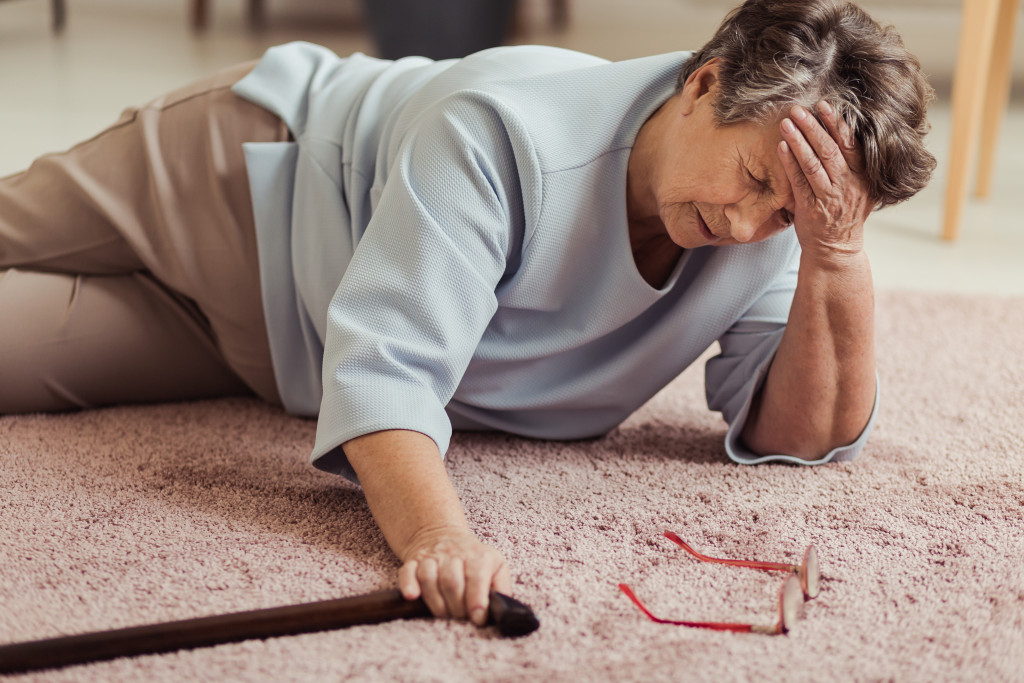The Centers for Disease Control and Prevention (CDC) painted a grim picture of the effects of falls on one’s health. This can make anyone, senior or not, worry.
There are more than 50 million seniors—people aged 65 and above—in the US, according to 2019 census data. According to the CDC, one in four seniors suffers from a fall each year. If you’re a senior and have suffered a fall from the past year, you have a higher chance of experiencing it again. It’s not just that; there are more alarming statistics about seniors falling.
The CDC revealed that falls are the leading cause of fatal injuries, including traumatic brain injuries in older adults. Each year, emergency rooms treat three million seniors because of fall injuries. Each year, too, hospitals treat 800,000 senior patients because of hip fractures, broken bones, and head injuries caused by falls. Of this number, 300,000 suffer from hip fractures alone. But why is falling common in older adults?
CDC explained that seniors are prone to falls because of several reasons. Mainly, older adults have impaired vision and weak muscles, and stiff joints. In some cases, medications cause dizziness and other side effects that affect a person’s vision and balance. Diet, lack of exercise, unsafe shoes, sore feet, and trip hazards are also some reasons why many seniors fall.
You can’t prevent falls from happening, though. However, you can do something to minimize their occurrence.
1. Exercise to Keep Muscles Strong
One of the leading causes of falls is weak muscles and stiff joints. To make muscles and joints stronger, exercise regularly. Whole-body exercises are good for you but focus on leg muscles. Your knee, hip, and calf muscles are the muscles that will catch you when you fall. Work on them.
To prevent your vision from being impaired while you exercise, wear accessories that can help keep your hair away from your face, such as workout headbands. They are more comfortable and convenient to use compared to caps or plastic headbands.
Walking is a great exercise to strengthen leg muscles. There are simple area-specific exercises that you can do, too. Leg extension for your thighs, knee curl for your lower back, and toe stand for your calves and ankles.
Exercise is also suitable for helping you maintain your balance, which is needed to keep yourself on your toes.
2. Install Basic Safety Precautions at Home
Most falls occur at home. This makes it essential to fall-proof your home. Installing a few simple safety precautions can significantly lower the risks of falls.
You can start with better lighting. If there is adequate lighting in your home, you can easily see trip hazards and other obstacles. At the same time, have light switches moved to places where you can easily reach them. If they are within reach when you enter a room, you don’t have to grope in the dark, which can increase your risk of tripping on unseen objects.
Remove trip hazards such as small rugs and keep big carpet firmly fixed on the floor. Get rid of all the clutter scattered on your floors and stairs. Always be aware of where your pet is to avoid tripping. Stick some non-slip strips on your stairs and non-carpeted areas.

Install handrails and grab bars where necessary, such as near bathtubs, in your shower area, on both sides of your stairs, and near toilets. You should have something to hold on to in places to keep your balance and prevent falling.
Use a grabbing tool when taking stuff from hard-to-reach places. Make sure that items that you often use are within easy reach. Avoid using a step stool if you’re alone in your house.
3. Talk to Someone About Your Health
Your doctor can give you advice about health problems that can increase the risk of you falling. If you have impaired vision and hearing, you can be recommended for an eye and hearing check-up.
It’s also essential to ask your doctor for an annual medication review. There are prescribed medications that can cause dizziness. The more you take them, the more you’ll likely experience balance issues. Your doctor can recommend safer alternatives to your current medications or reduce them to minimize your risk of falling.
Don’t Panic
If you fall, stay calm and get back up slowly. Don’t hurry because it will make you dizzier. Sit back and assess yourself.
Are you hurt? Is there something in your body that is in pain? Do you feel nauseous? If yes, call 911 immediately.
If you appear fine, call your doctor. They can evaluate you further and inform you if you need to go to the hospital or not.
Remember, don’t panic in situations like this. It can worsen any injury that you may sustain. To prevent accidents like this from happening, adopt the prevention practices in today’s article.
